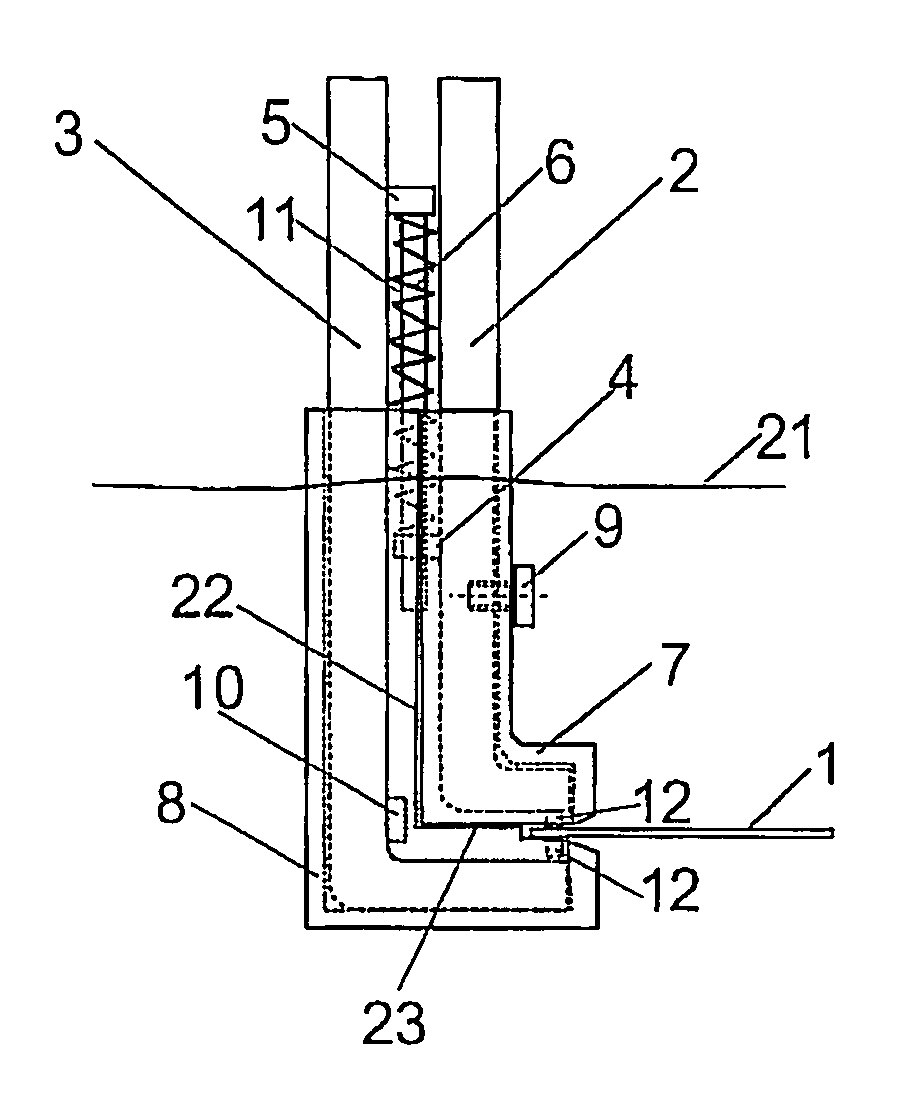Power supply device in a device for electrochemical treatment
a power supply device and electrochemical treatment technology, applied in contact devices, electrodialysis, refrigeration components, etc., can solve the problems of reducing the thickness of the metal layer on the material to be treated, repeated damage of the insulator layer, and inability to use the reject board in the subsequent etching step
- Summary
- Abstract
- Description
- Claims
- Application Information
AI Technical Summary
Benefits of technology
Problems solved by technology
Method used
Image
Examples
Embodiment Construction
[0046]FIG. 1 represents an exemplary embodiment of an electrical supply unit in accordance with the invention, in the same view as in FIG. 8 which was described in the introduction. The same references are used for elements which correspond to each another. A material 1 to be treated is held, and electrical contact is made with it, by a clamp which is formed by an upper electrical feed or a clamp upper part 2 and a lower electrical feed or a clamp lower part 3, with the clamp upper part 2 and the clamp lower part 3 respectively consisting of a blank material with good conductivity. A guide block 4, in which a spring guide 11 is mounted so that it can move in the vertical direction in a bore, is rigidly fastened to the clamp upper part 2. The clamp lower part 3 has a rigidly fastened spring block 5, in which the spring guide 11 is firmly engaged. Between the two blocks 4 and 5, a spring is arranged on the spring guide 11 and presses the clamp upper part 2 against the clamp lower part...
PUM
| Property | Measurement | Unit |
|---|---|---|
| thickness | aaaaa | aaaaa |
| thickness | aaaaa | aaaaa |
| thickness | aaaaa | aaaaa |
Abstract
Description
Claims
Application Information
 Login to View More
Login to View More - R&D
- Intellectual Property
- Life Sciences
- Materials
- Tech Scout
- Unparalleled Data Quality
- Higher Quality Content
- 60% Fewer Hallucinations
Browse by: Latest US Patents, China's latest patents, Technical Efficacy Thesaurus, Application Domain, Technology Topic, Popular Technical Reports.
© 2025 PatSnap. All rights reserved.Legal|Privacy policy|Modern Slavery Act Transparency Statement|Sitemap|About US| Contact US: help@patsnap.com



